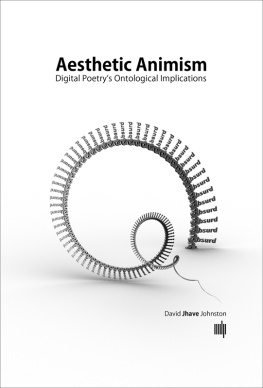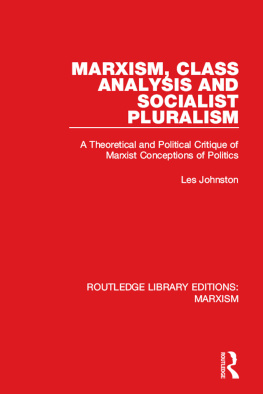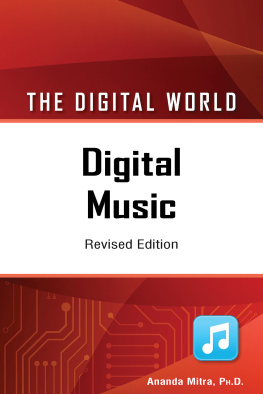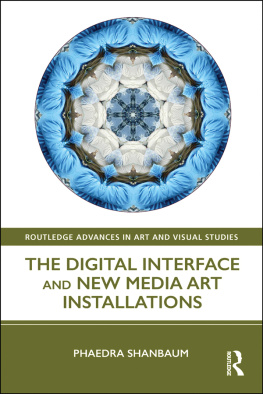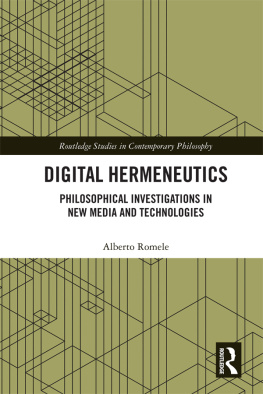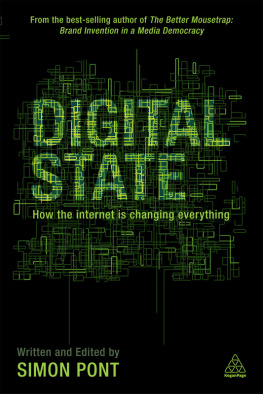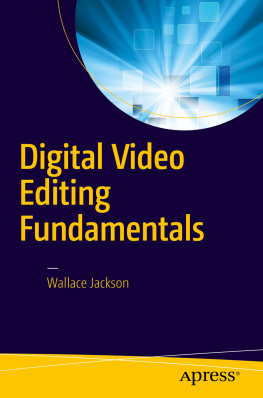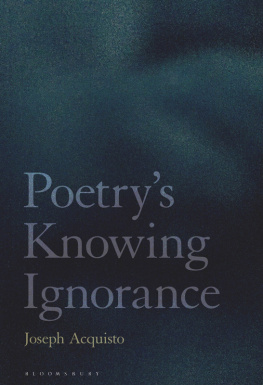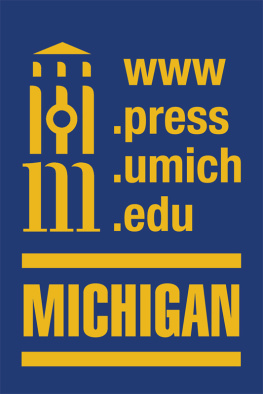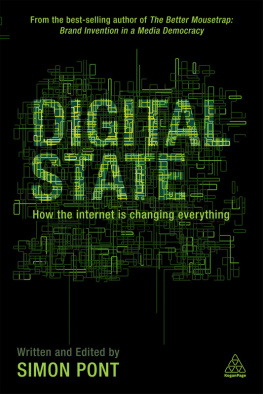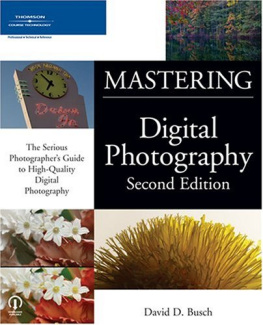Aesthetic Animism
Digital Poetrys Ontological Implications
David Jhave Johnston
The MIT Press
Cambridge, Massachusetts
London, England
2016 Massachusetts Institute of Technology
All rights reserved. No part of this book may be reproduced in any form by any electronic or mechanical means (including photocopying, recording, or information storage and retrieval) without permission in writing from the publisher.
This book was set in Stone Serif Std by Toppan Best-set Premedia Limited. Printed and bound in the United States of America.
Library of Congress Cataloging-in-Publication Data
Names: Johnston, David Jhave, author.
Title: Aesthetic animism : digital poetrys ontological implications / David Jhave Johnston.
Description: Cambridge, MA : The MIT Press, 2016. | Based on the authors dissertation (doctoral)Concordia University, 2011. | Includes bibliographical references and index.
Identifiers: LCCN 2015039944 | ISBN 9780262034517 (hardcover : alk. paper)
eISBN 9780262334389
Subjects: LCSH: Computer poetryHistory and criticism. | Computer PoetryTechnique. | Literature and technology.
Classification: LCC PN1059.C6 J86 2016 | DDC 809.1/911dc23 LC record available at http://lccn.loc.gov/2015039944
10987654321
Acknowledgments
This book grew from doctoral work. My PhD dissertation advisers provided crucial counsel: Ollivier Dyens, Chris Salter, Sha Xin Wei, and Jason Lewis. Excerpts have appeared in EBR (Electronic Book Review), LARB (Los Angeles Review of Books), and POEMM: The Album (a book of essays released by Obx Labs in 2015).
Stephanie Strickland read through and commented on early drafts with meticulous intensity. School of Creative Media (City University of Hong Kong) colleagues and friends Daniel Howe, Roberto Simanowski, Ingrid Hoelzl, Jane Prophet, Bobo Lee, and many others tolerated my anxieties. Poets and critics whose conversation contributed to my thought: Loss Pequeo Glazier, Chris Funkhouser, Amaranth Borsuk, Nick Montfort, and John Cayley.
Short lists exclude the many helpful, gracious, and thoughtful individuals whose insights nourish. I thank you all. I am grateful also to the editors and competent staff at MIT Press.
There are innumerable dedicated authors/artists/critics whose creative works are not covered at all or sufficiently as befits their merit in this volume. These include Kathi Inman Berens, Alan Bigelow, Abigail Child, Roderick Coover, M. D. Coverley, Maria Damon, Jeremy Douglass, Natalia Fedorova, Taras Mashtalir, Ottar Ormstad, Marjorie Luesebrink, Will Luers, Hazel Smith, Mark Marino, Kate Pullinger, Scott Rettberg, Maria Mencia, Patricia Tomaszek, Mark Sample, Special America, Rainer Strasser, Illya Szilak, Steve Tomasula, Rob Wittig, Judy Malloy, Peter Ciccariello, Chris Funkhouser, and many others. Apologies; go read them.
Finally, thanks to Mom for years of solid, intelligent conversation, and my family for their effervescence. And to my dear friends Sophie, Janusz, Serge, Thanh, Ouadane, Anke, Pascaline, Jericho, and Susan: thank you.
How-to (Read This Book)
In this era of compressed attention, the following information might prove useful.
Chapter 1: Contexts
Read this if you are arriving from the humanities or literature. It introduces and outlines the general argument, and provides an overview of the subject of digital poetry and the approach. It also defines terms, including TAVs (textual audiovisuals) and TAVITs (textual audiovisual interactives).
Chapter 2: Critiques
For literary theorists, critics, students, and philosophically inclined readers: this chapter provides an overview of theories about language that leads toward a notion of spoems (poetic objects), outlines a brief history of image-texts, attempts a symbiotic merger between two historically distinct ways (materiality and ontologies) of considering poetry, and contains central arguments about aesthetic animism. These concern the plausibility of living language as an outcome of the convergence of literature and computation, the volumetric possibility that archetypal letterforms relate to internal physiognomy, and discourse on how these archetypal forms might be attained in ways that are both synesthetic and synergetic.
Chapter 3: Practices
Digital poetry case-studies. The chapter begins with precedents, typographic explorers, and parallel practitioners. The bulk of the chapter offers numerous case-studies of contemporary digital poetry (and/or language-art in mediated contexts) grouped by thematics.
Chapter 4: Softwares
Software defines what digital poetry is. This chapter explores the temporal implications of animation time lines on the literary imagination. Read it if you are concerned with software studies and/or creative media.
Chapter 5: Futures
The final chapter proposes a few seemingly ludicrous, perhaps-prescient prophecies. Auto-writing bots, emotive reverse-engineering, and an inexhaustible muse. Im an artist taking refuge in academia. I make big claims. In this era of advanced entropy, it seems appropriate to suggest the edges, to surrender into a contingent infinite.
Appendices
Tangents for elliptical thinkers: Ekphrasis in the digital meadow, neuroscience of semantics, Simondon and the Singularity, poetry as cryptography.
Contexts
I think electronic expression has come not to destroy the Western arts and letters, but to fulfill them.
Richard Lanham, 1995
Consider this book a semipopulist decoder for some of the new forms of poetry emerging. It is not simple nor does it move in a straight line, but it does strive to describe a poetics appropriate to the digital era and establish digital poetrys connection to traditional poetrys concerns with being.
Aesthetic Animism is a compendium of critical approaches to literary practices, with a concentration on poems, utilizing digital technology in the period 19942014. Pure literati scholars may be challenged by the fact that many of the poems cited are not poems and are not written by poets; some are ads, conceptual art, interactive displays, performative projects, games, and apps. As fields open, boundaries dissipate, and often, exterior catalysts contribute to core transformations. Digital poetry is not simply a descendant of the book.
As Patricia Crain notes in Reading Childishly: A Codicology of the Modern Self , The book form is often represented as a container for aspects of the self that can only be acquired there (quoted in Hayles and Pressman 2013). The aspects of self found in digital poems are difficult to decipher and frequently more easily diffused acquisitions. The horizons of our attention contract in inversely proportional ways to the opportunities of the network. The copies we own of digital works are ephemeral, nontactile installations on machines that will be obsolete within years; digital poems do not sit in the hand or on the shelf but rather on a hard drive and servers; old computers and dysfunctional software are rarely considered as heritable traditions. Digital work does not confirm selfhood as poetic literacy did; instead it distends selves toward collectivities that remind it of oblivion, redundancy, arbitrary obliteration, obsolescence, and overlap. The speed of replacement often precludes the forms of emotive attachments once developed over books as a tradition: aspects of identity, ways of knowing. Yet this book operates on the premise that the digital form operates as a container for aspects of a networked self that can only be acquired there

